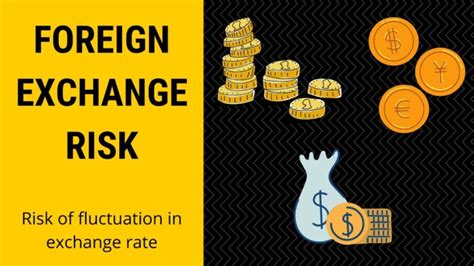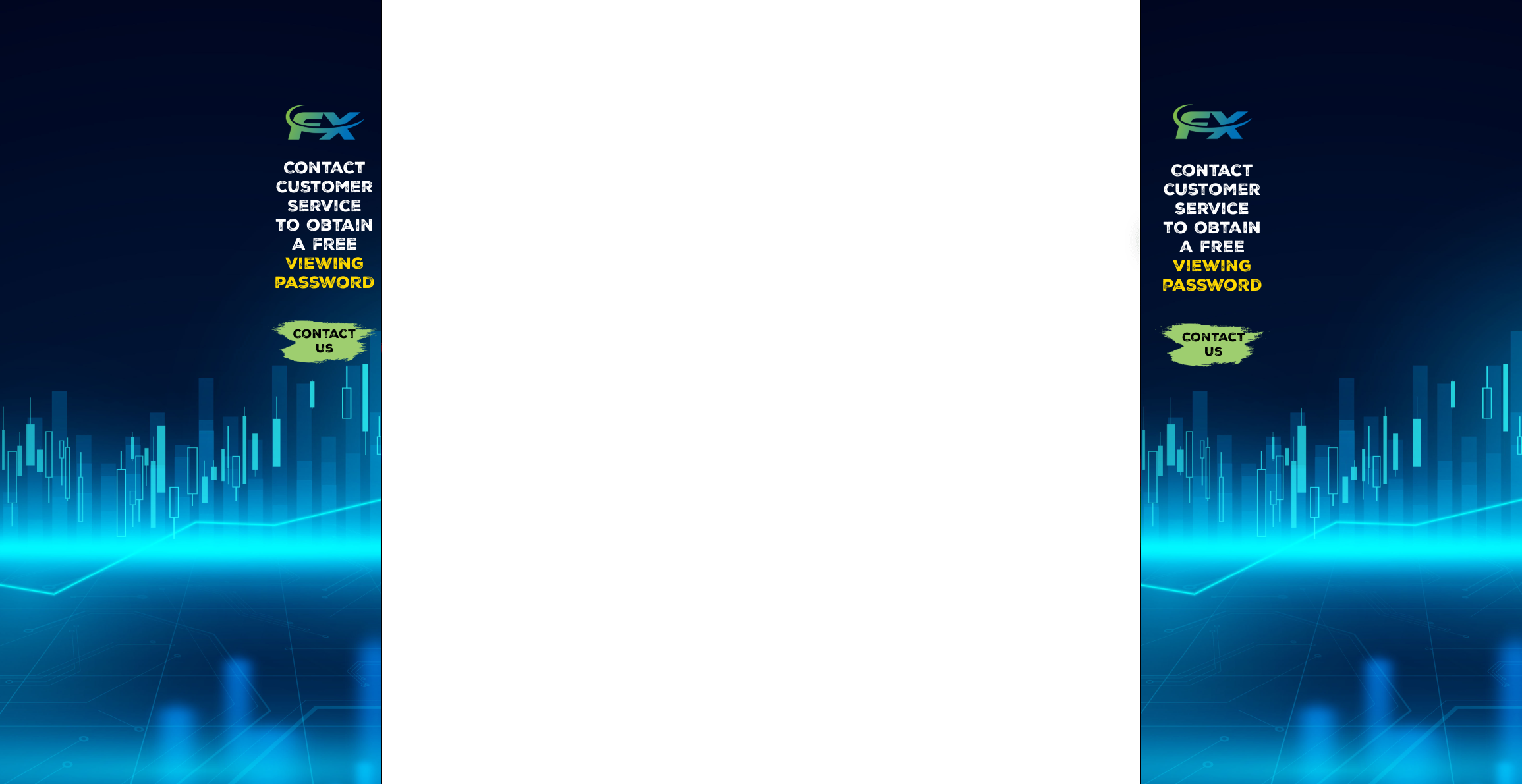Forex trading offers the potential for significant profits, but it also comes with inherent risks that can jeopardize your capital if not managed properly. Forex trading involves buying and selling currency pairs, such as EUR/USD or USD/JPY, in a highly volatile and dynamic market. Effective risk management is crucial for every trader to mitigate losses and protect investments. In this guide, we’ll explore various strategies and techniques to help you manage risk in Forex trading, ensuring that you can navigate the market with greater confidence and control.
Understanding Forex Risk and Its Types
Forex trading involves various risks that traders must manage carefully to protect their investments. Understanding these risks, such as market, leverage, liquidity, and event risks, is essential for success in Forex trading.
1. Market Risk in Forex Trading
Market risk in Forex trading refers to the potential for a trader’s position to lose value due to fluctuations in the overall market. Forex prices can change rapidly, and various factors influence these movements, including global economic events, interest rates, and geopolitical developments.
Forex pairs like EUR/USD or USD/JPY are sensitive to global economic reports, such as GDP releases or inflation data.
Currency movements can be unpredictable, causing significant losses if a trader is not managing their risk properly.
Tips for Managing Market Risk:
Use stop-loss orders to limit potential losses.
Diversify your portfolio across different currency pairs.
Stay informed about major economic events, such as Non-Farm Payrolls or central bank meetings.
2. Leverage and Margin Risk
Leverage allows Forex traders to control larger positions with a smaller initial investment. However, it also amplifies both potential gains and risks. The greater the leverage, the higher the chance of liquidation if the market moves unfavorably.
Key Points:
Leverage magnifies both profits and losses.
Margin calls occur when account equity falls below the required level.
High leverage (e.g., 100:1) can lead to significant risks, especially when trading volatile currency pairs like GBP/USD.
Strategies to Mitigate Leverage Risk:
Use conservative leverage ratios.
Ensure adequate margin levels are maintained.
Avoid overleveraging when trading volatile pairs, such as USD/CHF.
3. Liquidity Risk in Currency Pairs
Liquidity risk refers to the possibility of being unable to execute a trade at a desired price due to insufficient market participants. Highly liquid currency pairs, such as EUR/USD and USD/JPY, generally offer lower liquidity risk, but less liquid pairs can be challenging during periods of volatility.
| Currency Pair | Liquidity Level | Risk of Slippage | Common Causes of Low Liquidity |
|---|---|---|---|
| EUR/USD | High | Low | Major economic news releases, low market hours |
| GBP/USD | Moderate | Medium | Geopolitical events, market holidays |
| USD/CHF | Low | High | Thin trading during off-peak hours |
Managing Liquidity Risk:
Focus on trading major currency pairs like EUR/USD for better liquidity.
Avoid trading during off-hours, such as weekends or during market holidays.
Monitor the bid-ask spread to understand market depth.
4. Event Risk: How Economic News Affects Forex Markets
Event risk refers to the possibility of price movements caused by unexpected economic or geopolitical events. Key economic reports like interest rate decisions, inflation reports, or trade balances can cause drastic price changes, especially for volatile currency pairs like AUD/USD.
For example, when the U.S. Federal Reserve announces an interest rate change, currency pairs like USD/CHF can experience sharp movements. Similarly, geopolitical events like elections or trade tensions between countries can also trigger substantial risk in the Forex market.
Managing Event Risk:
Stay updated on scheduled economic releases and central bank meetings.
Use economic calendars to prepare for major announcements.
Consider reducing position sizes before major events like Non-Farm Payrolls or Central Bank Meetings.
Foreign Exchange Risk Management Strategies
Managing risk is crucial in Forex trading. Effective risk management strategies help traders protect their capital and navigate volatile markets, ensuring consistent profits. This cluster will explore strategies, including stop-loss orders, position sizing, and hedging, among others.
1: Using Stop-Loss Orders to Manage Forex Risk
A stop-loss order is a key tool for controlling losses in volatile markets.
It automatically triggers a market order when the price moves against your position, preventing further loss.
Common strategies include setting a fixed stop-loss at a specific number of pips or using a trailing stop to lock in profits while protecting gains.
Recommended for all Forex traders, especially in pairs with high volatility like GBP/USD or EUR/USD.
Key Benefits:
Protects your account from excessive drawdowns.
Enables disciplined risk management, even when you're away from the screen.

2: Position Sizing and Risk-to-Reward Ratio
The position size plays a critical role in managing Forex trading risks. By calculating the right position size, traders can limit their exposure to any single trade.
A well-calculated risk-to-reward ratio ensures that even with losses, your profits outweigh the risks.
The general rule is to aim for a 1:2 risk-to-reward ratio: risking $1 to potentially gain $2.
For example:
EUR/USD: If you risk 20 pips with a 40-pip target, your risk-to-reward ratio is 1:2.
Position Size Formula:
3: Hedging as a Forex Risk Management Strategy
Hedging involves opening opposite positions in the market to offset potential losses. By using currency pairs such as USD/JPY and EUR/USD, traders can reduce exposure to market fluctuations.
Direct Hedging: Open opposing positions in correlated pairs.
Indirect Hedging: Use instruments like options or CFDs to hedge against adverse price movements.
While it can reduce risk, hedging requires understanding correlations between currency pairs, making it best suited for advanced traders.
4: Economic Events and Risk Management
Understanding how major economic events impact Forex risk is key to successful risk management.
Interest Rate Decisions can lead to large price swings, especially in pairs like USD/CHF or EUR/GBP.
Non-Farm Payrolls (NFP) and GDP Releases often trigger volatility and can expose traders to unpredictable moves.
Traders can adjust their strategies by using news filters or trading around these events to minimize exposure.
5: Diversifying Currency Pairs for Risk Reduction
To reduce risk, traders can diversify their positions across multiple currency pairs, such as AUD/USD, NZD/USD, and USD/JPY. This strategy reduces the impact of adverse price moves in a single market.
| Currency Pair | Correlation | Volatility Level | Risk Exposure |
|---|---|---|---|
| EUR/USD | High | Moderate | Medium |
| GBP/USD | High | High | High |
| USD/JPY | Low | Low | Low |
| AUD/USD | Moderate | Low | Low |
Diversification helps spread risk across assets with differing volatility levels, allowing traders to reduce potential losses.
To wrap up, Forex trading risk management strategies, such as stop-loss orders, position sizing, and hedging, are vital tools in protecting capital and ensuring long-term profitability. Each strategy has its place depending on the market conditions, currency pair, and the trader's risk tolerance. By incorporating these strategies into your trading plan, you can improve your ability to navigate the unpredictable world of Forex trading while minimizing exposure to significant losses.
Risk Management Using Technical Indicators

Risk management in Forex trading can be enhanced using technical indicators. By understanding how tools like the Moving Average, MACD, and Bollinger Bands work, traders can minimize losses and maximize profitability in volatile markets like EUR/USD or GBP/USD.
1. Moving Average: A Tool for Identifying Trends
Simple Moving Average (SMA) vs. Exponential Moving Average (EMA)
Helps to identify market trends and possible reversals.
Using Moving Averages for Entry and Exit Points
Moving Averages help determine ideal points for opening or closing positions.
Golden Cross and Death Cross Strategies
These patterns signal potential upward or downward trends, aiding in risk management.
Setting Stop-Loss with Moving Averages
Learn how to use moving averages as a dynamic stop-loss level.
2. Relative Strength Index (RSI) and Overbought/Oversold Conditions
RSI Calculation and Interpretation
RSI helps identify overbought or oversold conditions, offering insights on possible market corrections.
Using RSI for Risk Management
Traders can set risk levels based on RSI values, avoiding trades in extreme conditions.
Combining RSI with Other Indicators for Confirmation
Enhancing RSI predictions by pairing it with other technical indicators like Moving Averages.
3. Bollinger Bands and Volatility Assessment
Understanding Bollinger Bands
Bollinger Bands measure market volatility and provide insights on potential price movements.
Bollinger Bands and Risk Management
Learn how price touching the upper or lower bands can indicate overbought or oversold conditions.
Adjusting Risk with Bollinger Bands
Use Bollinger Bands to adjust position sizes and stop-loss settings.
Breakouts and Risk Exposure
Identify breakout signals and adjust risk management accordingly.
Bollinger Bands with RSI for Better Risk Management
Combine Bollinger Bands with RSI to confirm potential risk management strategies.
4. MACD (Moving Average Convergence Divergence): A Trend Reversal Indicator
Understanding MACD Signals
The MACD helps identify shifts in momentum and potential risk for trend reversals.
Setting Stop-Loss with MACD Crossovers
Learn how to use MACD crossovers for effective stop-loss placement.
MACD and Divergence for Risk Control
Spot divergences between price action and MACD to anticipate trend reversals and manage risk.
5. Fibonacci Retracement for Risk Assessment
Understanding Fibonacci Levels in Forex
Key Fibonacci levels, such as 38.2%, 50%, and 61.8%, are important for predicting market pullbacks.
Using Fibonacci Retracement to Set Stop-Loss Levels
Position stop-loss orders around key Fibonacci levels to minimize risk.
Fibonacci and Risk Reward Ratio
Adjust your risk/reward ratio based on Fibonacci retracement levels for better risk management.
Fibonacci Levels and Entry Points
Use Fibonacci retracement for finding potential entry points and reducing risk exposure.
Combining Fibonacci with Moving Averages for Confirmation
Use the Fibonacci tool alongside moving averages to confirm price levels and better assess risk.
Fibonacci Extensions for Targeting Profits
Predict potential price targets beyond the 100% level using Fibonacci extensions, reducing risk by setting realistic profit goals.
6. Parabolic SAR and Risk Control
Introduction to Parabolic SAR
The Parabolic SAR helps indicate potential price reversals, providing insight into optimal entry and exit points.
Using Parabolic SAR for Trailing Stop-Loss
Implement Parabolic SAR for trailing stop-loss orders to lock in profits and minimize losses.
Parabolic SAR and Trend Confirmation
Confirm the direction of trends and assess potential risk of reversals.
Risk Mitigation with Parabolic SAR Adjustments
Adjust SAR parameters to optimize risk management strategies, based on market conditions.
Table for Bollinger Bands and Volatility Assessment - Breakouts and Risk Exposure
| Indicator | Signal | Action | Risk Management Tip |
|---|---|---|---|
| Upper Bollinger Band | Price touches the upper band | Consider selling (overbought condition) | Set a stop-loss just above the upper band for protection. |
| Lower Bollinger Band | Price touches the lower band | Consider buying (oversold condition) | Set a stop-loss just below the lower band to limit risk. |
| Breakout from Bands | Price breaks through the bands | Market volatility increases, prepare for movement | Use a smaller position size or tighter stop-loss until volatility normalizes. |
Economic Events and Their Impact on Foreign Exchange Risk
Economic events, such as Interest Rate Decisions and Non-Farm Payrolls, play a pivotal role in Forex risk management. These events can create market volatility, affecting currency pairs like EUR/USD and USD/JPY. Let’s explore how these events influence Forex risk.

1. Interest Rate Decision and Forex Risk
Interest rate decisions by central banks, such as the Federal Reserve or European Central Bank, have a direct impact on currency pairs like USD/CHF or EUR/USD.
Interest rate hikes typically strengthen the currency as higher rates attract investors.
Conversely, rate cuts may lead to currency depreciation, heightening Forex risk.
Understanding these decisions can help traders predict potential volatility in the market.
2. Non-Farm Payrolls (NFP) and Its Influence on Currency Markets
Non-Farm Payrolls (NFP) data, released monthly by the U.S. Bureau of Labor Statistics, often causes significant market fluctuations. NFP impacts the USD and can affect other currency pairs indirectly.
A stronger-than-expected NFP report may push the USD higher, affecting USD-based currency pairs like EUR/USD and GBP/USD.
Conversely, weaker-than-expected data can cause the USD to fall, introducing heightened risk for traders.
The release date and time often create a spike in volatility, making risk management essential for Forex traders.
3. GDP Release and Its Impact on Forex Risk
The Gross Domestic Product (GDP) release is another crucial economic event that influences Forex trading.
A positive GDP report suggests economic strength, which can lead to currency appreciation.
A negative report signals economic contraction, potentially leading to currency depreciation.
Forex traders need to monitor GDP reports, especially for major currencies like USD, EUR, and GBP, as these can shift market sentiment and increase volatility.
4. Inflation Reports and Their Effect on Currency Pairs
Key Inflation Indicators and Their Impact on Currency Pairs
| Inflation Indicator | Currency Impact | Risk Factor | Example Economic Event |
|---|---|---|---|
| Consumer Price Index (CPI) | High CPI typically strengthens a currency due to expectations of tighter monetary policy. | Higher risk with inflationary pressure. | U.S. CPI report impacts USD. |
| Producer Price Index (PPI) | Rising PPI signals cost inflation, which may weaken the currency. | Increased volatility in commodity-based currencies (e.g., AUD/USD). | Canadian PPI report can affect CAD. |
| Core Inflation Rate | A stable or rising core rate can lead to higher interest rates, appreciating the currency. | Risk of overvaluation if misinterpreted. | Eurozone Core Inflation affects EUR. |
Inflation reports like CPI and PPI can influence Forex risk by altering expectations about central bank actions. Traders watch these reports for signs of rising inflation, which may prompt central banks to increase interest rates, strengthening the currency.
5. Central Bank Meetings and Forex Market Volatility
Central bank meetings, such as the Federal Reserve's Federal Open Market Committee (FOMC) or the European Central Bank's policy meetings, are key events in Forex trading.
Decisions made during these meetings can trigger immediate volatility in currency pairs.
Traders closely monitor these meetings for clues about interest rate changes, asset purchases, or shifts in economic outlook.
A sudden shift in policy can create sudden market movements, increasing risk. For example, unexpected hawkish rhetoric from the Fed may boost the USD, while dovish tones could lead to a sell-off.
Economic events, such as Interest Rate Decisions, Non-Farm Payrolls, GDP releases, and inflation reports, significantly impact Forex market volatility. Understanding these events and their potential effects on currency pairs like USD/JPY or EUR/GBP is essential for effective risk management. By monitoring these events and adjusting strategies accordingly, traders can reduce risk and capitalize on market opportunities.
Choosing the Right Trading Platform for Risk Management

In Forex trading, selecting the right trading platform is crucial for effective risk management. The right platform, such as MetaTrader 4 or TradingView, can greatly enhance your ability to manage risk, execute strategies, and monitor market movements.
1: MetaTrader 4: A Reliable Choice for Risk Management
MetaTrader 4 (MT4) is widely recognized for its robust features, making it a top choice for managing risk in Forex trading. This platform offers a range of tools that traders can use to monitor and manage risk effectively.
Key Features of MT4:
Risk Management Tools: Includes stop-loss orders, take-profit levels, and trailing stops to minimize losses.
Customizable Alerts: Traders can set up price alerts to notify them of market movements, helping them to manage risk proactively.
Real-time Data: Access to real-time market data allows traders to stay informed about potential risks and make timely decisions.
Expert Advisors (EAs): Automated trading allows traders to implement predefined risk management strategies.
2: cTrader: A Platform for Sophisticated Risk Management
cTrader is another advanced trading platform, offering traders innovative features to control risk effectively in Forex trading.
Top Features of cTrader for Risk Management:
Advanced Order Types: Traders can set advanced orders like One Cancels the Other (OCO), which helps manage risk when dealing with volatile currency pairs like EUR/USD or USD/JPY.
Charting Tools: The platform offers customizable charts with technical indicators like the Moving Average and MACD, useful for analyzing risk.
Risk-to-Reward Ratios: Easy-to-use calculators help traders assess potential profits versus risks.
How it Helps with Risk Management:
Traders can set automatic risk levels before entering a trade, ensuring they don’t exceed predetermined risk limits.
The platform supports backtesting, allowing traders to assess risk under various historical market conditions.
3: NinjaTrader: Integrating Risk Management into Your Trading Strategy
NinjaTrader is known for its focus on precision and control. Below is a table comparing the risk management features of NinjaTrader with other platforms like MetaTrader 5.
| Feature | NinjaTrader | MetaTrader 5 | TradingView |
|---|---|---|---|
| Stop-Loss Orders | Yes | Yes | Yes |
| Real-Time Alerts | Yes | Yes | Yes |
| Risk-to-Reward Tools | Yes | No | No |
| Customizable Indicators | Yes | Yes | Yes |
| Order Types | Advanced | Basic | Intermediate |
NinjaTrader offers more sophisticated tools for calculating risk-to-reward ratios, which is a critical part of successful risk management in Forex trading.
4: Choosing Between Platforms: Risk Management Considerations
When selecting a platform for risk management in Forex, traders should consider several factors that align with their individual strategies. Each platform offers unique advantages for risk control.
MetaTrader Platforms (MT4 and MT5):
Best for traders seeking automated risk management with Expert Advisors (EAs).
Known for its stability and widespread use.
cTrader:
Best for traders looking for advanced charting and sophisticated order types.
Offers an intuitive interface and advanced risk management features.
NinjaTrader:
Ideal for traders who require advanced risk analysis tools like risk-to-reward ratios.
Best suited for experienced traders who require precision.
TradingView:
A great choice for traders who focus on technical analysis and need real-time alerts to manage risk.
Choosing the right platform depends on your trading style, technical needs, and preferred risk management tools. Understanding the unique features of each platform helps ensure that you’re prepared for the market’s volatility.
Conclusion:
In conclusion, managing risk is an indispensable aspect of successful Forex trading. With the inherent volatility and unpredictability of the markets, understanding the different types of risks—such as market risk, leverage risk, and event risk—is the first step toward creating a solid risk management strategy. By utilizing proper tools like technical indicators (e.g., Moving Average, Bollinger Bands) and applying effective trading strategies (like scalping or trend following), traders can mitigate potential losses and make informed decisions. It’s also essential to stay aware of economic events such as interest rate decisions or Non-Farm Payrolls, which can dramatically shift market dynamics. Ultimately, a disciplined approach to risk management is the key to long-term profitability in Forex trading. Whether you're using platforms like MetaTrader 4 or cTrader, or even tracking currency pairs like USD/JPY or GBP/USD, mastering risk management can provide a stable foundation for your trading career.
Forex trading involves the buying and selling of currencies in pairs, such as EUR/USD or GBP/USD. It’s a decentralized global market where currencies are traded against each other with the aim of making a profit from fluctuations in exchange rates.
- Forex trading operates 24 hours a day, five days a week.
- The most traded currency pairs include EUR/USD, USD/JPY, and GBP/USD.
Risk management in Forex trading involves strategies to limit losses and protect profits, including:
- Setting stop-loss orders to automatically close positions at a certain loss level.
- Using appropriate leverage to avoid overexposure.
- Diversifying trading strategies across different currency pairs to reduce risk exposure.
The most common risks in Forex trading include:
- Market risk, which is the risk of losses due to market fluctuations.
- Leverage and margin risk, which arises from using borrowed funds to trade.
- Event risk, which includes unforeseen events like economic reports (e.g., Non-Farm Payrolls, GDP releases) that can impact the market.
Leverage in Forex trading is the ability to control a large position with a small amount of capital. For example, with 50:1 leverage, you can control $50,000 with just $1,000. However, while leverage can amplify profits, it also increases the risk of significant losses if the market moves against your position.
Some popular Forex trading platforms include:
- **MetaTrader 4 (MT4)**: Widely used for its simplicity and features like automated trading.
- **MetaTrader 5 (MT5)**: A more advanced version with more indicators and analysis tools.
- **cTrader**: Known for its intuitive interface and advanced charting tools.
Economic events such as interest rate decisions, Non-Farm Payrolls, and GDP releases can significantly influence currency prices. For example, if the US Federal Reserve raises interest rates, the USD may strengthen, affecting pairs like USD/JPY or EUR/USD. Traders often adjust their strategies based on the timing of these events to manage risk.
Technical indicators are tools used by traders to analyze market trends and make informed decisions. Some common **technical indicators** include:
- **Moving Average (MA)**: Used to smooth price data and identify trends.
- **Relative Strength Index (RSI)**: Helps identify overbought or oversold conditions.
- **Bollinger Bands**: Used to measure volatility and potential price reversal points.
A **stop-loss** order is a risk management tool that automatically closes a trade when the price hits a predetermined level. This helps limit potential losses in volatile markets. For example, if you open a position in **EUR/USD** at 1.2000, you might set a stop-loss at 1.1950 to limit your loss to 50 pips if the market moves against you.







